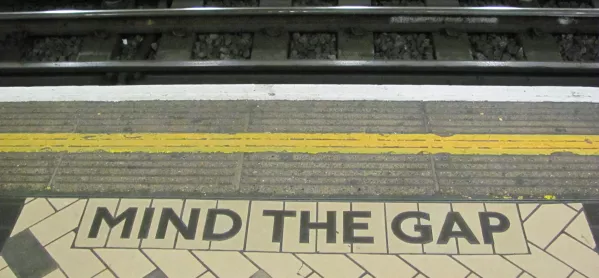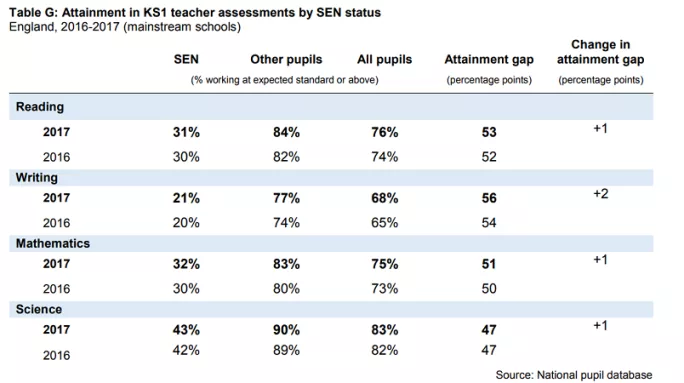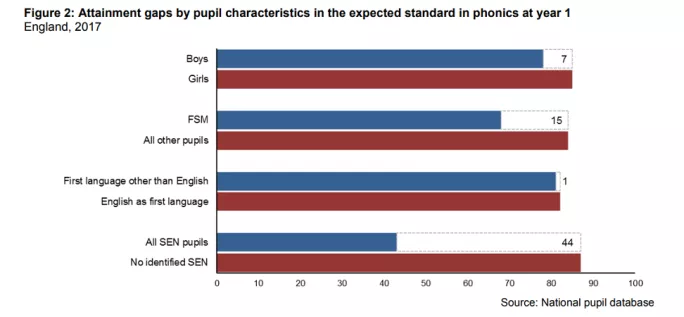The gap in reading and writing scores between poorer children and their more advantaged classmates has widened slightly at age 7, according to statistics released today.
The figures for key stage 1 teacher assessments show that just 61 per cent of pupils on free school meals reached the expected standard in reading by age 7, compared to 78 per cent of other pupils - a gap of 18 percentage points, up from 17 percentage points last year.
The overall percentage of pupils reaching the standard was 76 per cent.
The gap has also widened by one percentage point in writing, where 52 per cent of pupils on free school meals reached the expected standard by age 7, compared to 71 per cent of other pupils - a gap of 19 percentage points.
The gap in maths, where 60 per cent of pupils on free school meals reached the expected standard compared to 78 per cent of others, has stayed the same at 18 percentage points.
Source: DfE
The gap between girls and boys is widest in writing
Girls are more likely to reach the expected standard than boys in all subjects, but the gaps in all subjects have remained the same - with similar increases in attainment for both boys and girls.
Writing is the subject with the largest difference in attainment - 75 per cent of girls reached the expected standard in 2017 compared to 62 per cent of boys.
Source: DfE
SEND gap widens
But the largest achievement gap is that between those pupils with special educational needs and disabilities (SEND) and other pupils. And this has also widened slightly in all subjects.
Fewer than a third of pupils with SEND reached the expected standard in reading, writing or maths, and 43 per cent did so in science, compared to more than three-quarters of other pupils.
Source: DfE
Few poorer pupils reach phonics standard
Similar trends can be seen with the phonics check, which is initially taken at the end of Year 1 and can be retaken at the end of Year 2.
Here, the gap between those children on free school meals and the rest widened as the proportion of poorer pupils reaching the standard dropped by one percentage point to 68 per cent between 2016 and 2017.
The percentage of children not on free school meals reaching the standard rose from 83 per cent to 84 per cent.
Source: DfE
The statistics were published as research from the Sutton Trust, also out today, warned that disadvantaged pupils could fall further behind by the time they start school, after the government changed the amount of free early education that children of working parents are entitled to.








